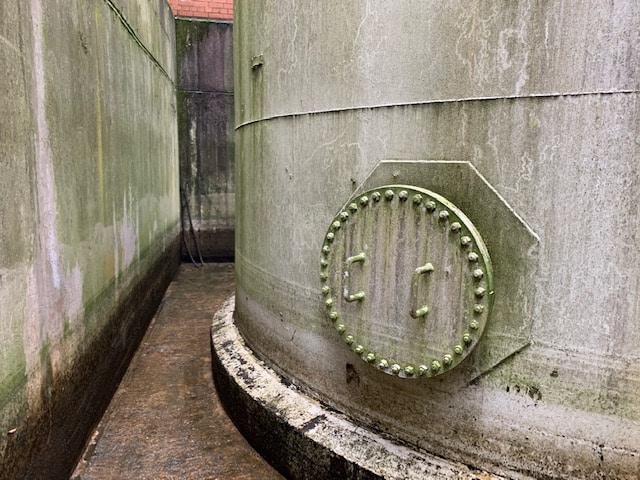This particular case study focuses on tank farm decommissioning at an NHS trust hospital in the Midlands. We were approached by a contractor who was looking for a safe solution to removing 4 x 160,000 litre tanks in the middle of a busy project, with numerous other contractors working on the same site. The overall project involved emptying approx 200,000 litres of water from the tank bund, emptying and cleaning the tanks internally, removing the gantry in sections to allow for reuse, then removing the tanks for disposal.
Initially we rejected the opportunity to quote for the works, as the contractor had been instructed to carry out the tank farm decommissioning using mechanical shears, which given the close proximity of other contractors, we felt this was not the safest option. Following an initial meeting, we were given the opportunity to present our proposed methodology to the site project management and safety officers. The method was well received and we were given the order to proceed.
The first part of the process was to create a safe working area, as the access into the tank area was limited. The main contractor created suitable access points into the bund in multiple areas to allow for personnel to safely enter. Our first job was to remove a large quantity of water from the bund, this was achieved by pumping the water through our own oil water separator, under a permit issued by the local water authority.
With the bund area clean and dry, the next phase of the tank farm decommissioning was emptying and internal cleaning of each tank. The tanks had large access hatches at the bottom, however the deep neck would have made access and egress quite difficult. Therefore, the decision was made to cut access hatches into the side of each tank to create a suitable opening for both entry, and also for efficient waste removal. All four tanks were cleaned under a confined space permit issued by the main contractor.
Upon completion of the tank cleaning, atmospheric monitoring was completed and gas free certificates issued for each tank. Work could then commence in dismantling the gantry above the tanks, cutting the tanks into sections and safely lowering everything to the ground using a 50 tonne crane. The tanks were cut from the outside using propane and oxygen cutting equipment by our own experienced team. Our crane operators were extrememly competent and dilligent in the way they looked after all lifting operations, ensuring a smooth transition from tank farm to a 40 yard skip positioned nearby.
With all tanks removed, the area is handed back over to the scaffold contractor to dismtle and remove the scaffold ready for the next phase of the works. All relevant documdntation was issued to the client to ensure compliance and the area left tidy.
If you would like to discuss any tank farm decommissioning requirements you may have, please do not hesitate to contact us on 01132635163, email [email protected] or fill out a contact form here.
You can also check our company waste license information using the EA public register here.

